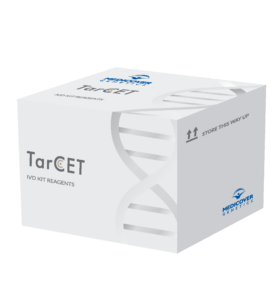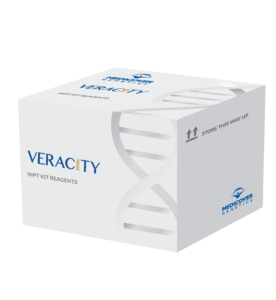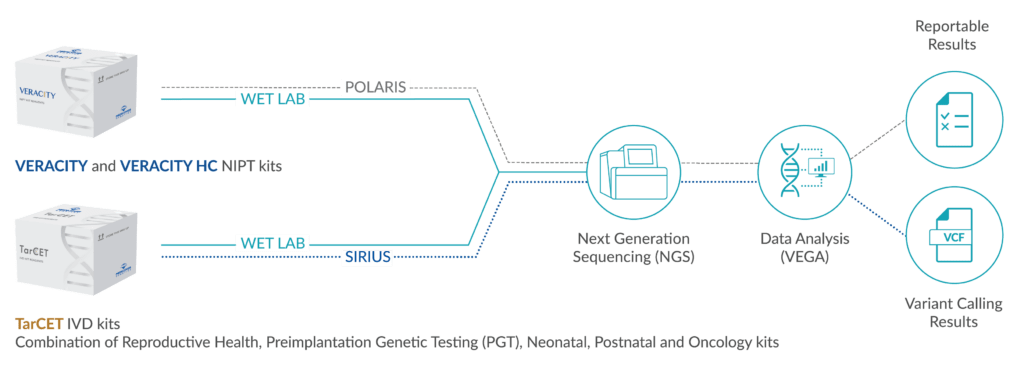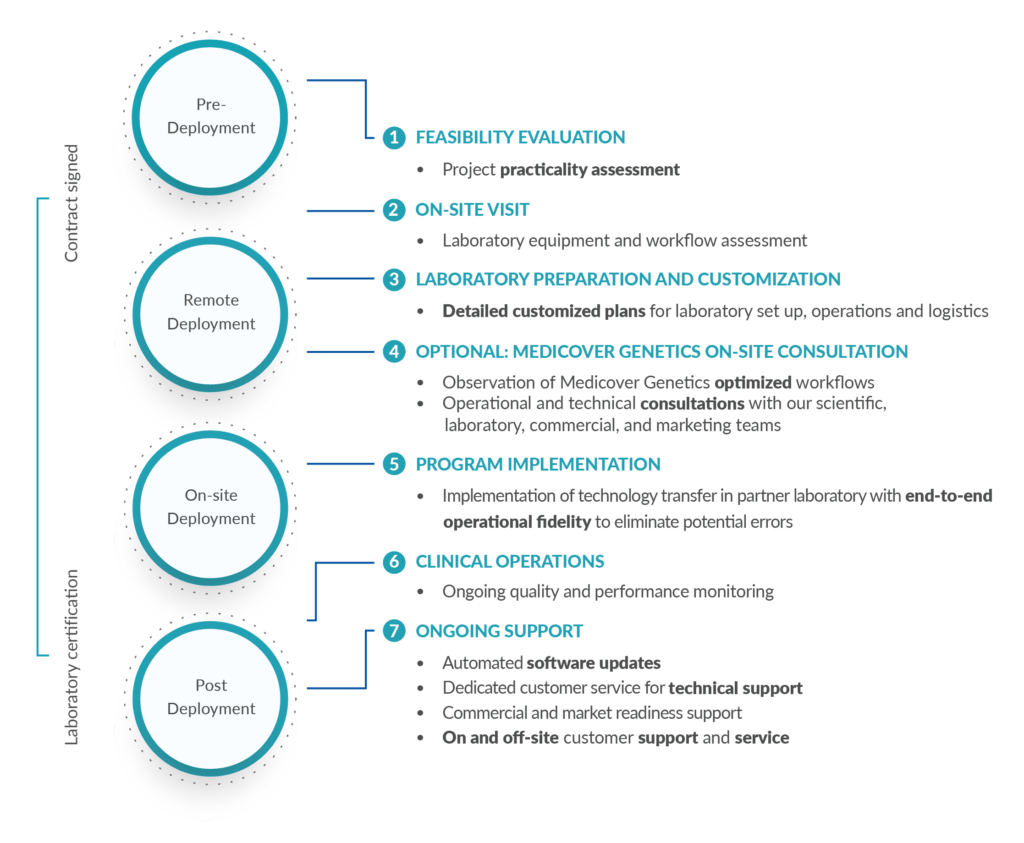Contents
- All about the pancreas
- Incidence of pancreatic cancer
- Pancreatic cancer symptoms
- What causes pancreatic cancer?
- Genetic alterations linked to pancreatic cancer
- Pancreatic cancer types
- Pancreatic cancer stages
- Treatment strategies for pancreatic cancer
- Novel approaches against pancreatic cancer
- Can we reduce our risk of pancreatic cancer?
- Conclusion
- References
All about the pancreas
The pancreas is a pear-shaped organ that is located at the upper left side of the abdomen, behind the stomach. It has two main functions—exocrine and endocrine—which are responsible for the production of digestive enzymes and metabolism hormones, respectively [1]. A healthy pancreas is responsible for the production of the enzymes and hormones essential for food digestion [1]. When the pancreas does not function properly, different disorders and diseases might manifest, with pancreatic cancer being one of the most severe.
Incidence of pancreatic cancer
Pancreatic cancer originates from the cells of the pancreas. When pancreatic cells do not work correctly, they start to grow uncontrollably, causing the formation of a mass also known as a tumor. It is the seventh leading cause of cancer death in both males and females, with the highest incidence rates being in Europe, Australia/New Zealand, and Northern America [2].
Pancreatic cancer symptoms
Pancreatic cancer symptoms are usually apparent at a late, advanced stage, whereas as early-stage pancreatic cancer is clinically silent. For that reason, pancreatic cancer is known as a “silent killer”. Knowing the symptoms associated with pancreatic cancer can help earlier diagnosis. Some examples are [3, 4]:
- Jaundice
- Weight loss
- Fatigue
- Nausea
- Vomiting
- Upper abdominal pain
- Dark urine
What causes pancreatic cancer?
Currently, the cause of pancreatic cancer is unknown. Different risk factors have been associated with pancreatic cancer, such as [5]:
- Poor diet
- Obesity
- Excessive alcohol consumption
- Older age
- Gender (males have higher incidence rate than females)
- Smoking
- Chronic pancreatitis
Family history is another critical factor that contributes to pancreatic cancer development. Hereditary pancreatic cancer accounts for 5-10% of all cases [6]. Additionally, a number of genetic syndromes have been correlated with pancreatic cancer development such as Peutz-Jeghers syndrome, melanoma‑pancreatic carcinoma syndrome, Lynch syndrome, and hereditary pancreatitis [7].
Genetic alterations linked to pancreatic cancer
Pancreatic cancer starts from genetic changes—mutations—that occur in the DNA of pancreatic cells. These mutations can either be inherited or acquired spontaneously during a person’s lifetime. Some examples of genes that are frequently mutated and can drive pancreatic cancer development and progression are TP53, KRAS, SMAD4, CDKN2A, and others [7]. Different studies have been investigating the role of these genes in pancreatic cancer. Understanding their function can help in the development of new targeted therapies as well as in early diagnosis [8].
Pancreatic cancer types
Pancreatic tumors are grouped according to the cells of origin. There are two main types:
- Exocrine tumors of the pancreas
Exocrine tumors arise from the exocrine tissue of the pancreas and are one of the most common types of pancreatic cancer. For that reason, people refer to this type of cancer as pancreatic cancer. Pancreatic ductal adenocarcinoma (PDAC) is the most common type of exocrine tumors with the highest incidence rates, accounting for more than 90% of all pancreatic cancer cases. PDAC has a very poor prognosis and high mortality rates [4].
- Endocrine tumors of the pancreas
This type of pancreatic tumor arises from the endocrine tissue of the pancreas. They are also known as pancreatic neuroendocrine tumors (PanNETs). PanNETs are a less common type of pancreatic cancer that account for less than 5% of all pancreatic cancer cases. They can be further classified depending on their ability to secrete hormones. Similar to PDAC, PanNETs have very low prognosis and high mortality rates [4, 9].
Pancreatic cancer stages
For better clinical management, pancreatic cancer is classified in different stages depending on the molecular and physical characteristics of the tumors. The stages can range from stage 0 to stage 4. Stage 0 is when the mass has not grown or spread. In stages 1 and 2 the mass is growing but is still small and has not spread. In stage 3, pancreatic cancer continues to grow, and it has spread to nearby lymph nodes. In the final stage, stage 4, the cancer is growing outside the pancreas, has invaded the nearby blood vessels and has metastasized to distant sites such as the liver, lungs, or bones [10].
Treatment strategies for pancreatic cancer
There are different treatment options available for pancreatic cancer depending on the stage of cancer, the health of the patient, and the characteristics of the tumor. Surgery, chemotherapy, and radiotherapy are some examples of therapy options. Surgery is considered as the first-line treatment approach in patients with resectable pancreatic cancer. In addition, chemotherapy drugs including fluorouracil, leucovorin, and others can be used in treating advanced or unresectable pancreatic cancer. FOLFIRINOX—a combination of multiple drugs—is also used as a first-line treatment for advanced metastatic pancreatic cancer and has been previously shown to have a positive effect on the survival of patients compared to other treatment approaches [11, 12].
Another alternative treatment approach for pancreatic cancer is immunotherapy. There are different types of immunotherapies that work differently and can enable the immune system of the patient to fight cancer. In pancreatic cancer, professional bodies such as the American Society of Clinical Oncology (ASCO) recommend the use of the immunotherapy drug pembrolizumab. This drug is recommended as a second-line treatment approach in advanced pancreatic cancer patients who tested positive for microsatellite instability (MSI)—a condition where the DNA is hypermutated in specific regions [13]. Immunotherapy options provide promising, novel approaches for pancreatic cancer management and therapy.
Novel approaches against pancreatic cancer
Even with the current treatment approaches, pancreatic cancer remains one of the deadliest types of cancer. A major contributing factor to the high mortality rates is the late detection of pancreatic cancer, since the patients are asymptomatic in early stages. Therefore, early detection and identification of the genetic mutations leading to pancreatic cancer is critical for better clinical management. Over the last few years, novel approaches have been emerging in cancer diagnostics. Liquid biopsy for therapy selection is one promising tool that is applicable for multiple types of cancer, including pancreatic cancer. By analyzing small fragments of DNA released from the tumor(s) and found in the peripheral blood, this tool can detect the genetic mutations linked to the patient’s tumor(s) non-invasively, and thus lead to tailored treatment. Certain liquid biopsy applications can also detect pancreatic cancer recurrence early-on through disease monitoring, offering new opportunities to improve pancreatic cancer detection and treatment guidance [14]. In the near future, liquid biopsy for early disease detection will be available, and will be of paramount importance for the detection of early stage, asymptomatic pancreatic cancer.
Can we reduce our risk of pancreatic cancer?
There are different ways of reducing the risk of developing pancreatic cancer. Genetic testing can inform people of the risk of developing hereditary pancreatic cancer and can be beneficial for those with a family history of pancreatic cancer. It is advised that high-risk groups, such as people with a hereditary predisposition to pancreatic cancer or people over 50 years old, should consider screening methods within defined time frames, including computerized tomography (CT) or magnetic resonance imaging (MRI) [15]. Additionally, healthier dietary habits such as eating vegetables and fruit, and limiting red meat and sweets has been correlated with reduced risk of pancreatic cancer [15]. Other common practices that can reduce the risk for pancreatic cancer are reducing alcohol consumption, and not smoking [16].
Conclusion
Pancreatic cancer is without any doubt one of the most dangerous and lethal types of cancer. Understanding the risk factors and the genetic causes of the disease can be an effective way to prevent or reduce the risk of pancreatic cancer and obtain an optimal therapeutic approach.
The content of this article is for informational purposes only and is not intended to replace professional medical advice or counseling. Please visit your healthcare provider if you have concerns about your health and well-being.
References
[1] “The Pancreas and Its Functions.” Pancreas Functions, Location & Disease | Columbia Surgery, https://columbiasurgery.org/pancreas/pancreas-and-its-functions. Accessed 5 Jul. 2023.
[2] Xu F, Huang M, Bai Y, Yin X, Yan J, Liu F, et al. “Landmarks in pancreatic cancer studies.” Cancer Cell Int, 22, 383 (2022), https://doi.org/10.1186/s12935-022-02803-8.
[3] Zhang, Quibo et al. “Pancreatic Cancer Epidemiology, Detection, and Management.” Gastroenterology research and practice, vol. 2016 (2016): 8962321. doi:10.1155/2016/8962321, https://www.hindawi.com/journals/grp/2016/8962321/.
[4] Rawla, Prashanth et al. “Epidemiology of Pancreatic Cancer: Global Trends, Etiology and Risk Factors.” World Journal of oncology 2019;10(1):10–27, doi:10.14740/wjon1166, https://www.ncbi.nlm.nih.gov/pmc/articles/PMC6396775/.
[5] McGuigan, Andrew et al. “Pancreatic cancer: A review of clinical diagnosis, epidemiology, treatment and outcomes.” World journal of gastroenterology vol. 24,43 (2018): 4846-4861, doi:10.3748/wjg.v24.i43.4846, https://www.ncbi.nlm.nih.gov/pmc/articles/PMC6250924/.
[6] Hruban, Ralph H et al. “Update on Familial Pancreatic Cancer.” Advances in surgery vol. 44 (2010): 293-311. doi:10.1016/j.yasu.2010.05.011, https://www.ncbi.nlm.nih.gov/pmc/articles/PMC2966038/.
[7] Andersson, Roland et al. “Pancreatic cancer – the past, the present, and the future.” Scandinavian journal of gastroenterology vol. 57,10 (2022): 1169-1177. doi:10.1080/00365521.2022.2067786 ,https://doi.org/10.1080/00365521.2022.2067786.
[8] Hu, Hai-Feng et al. “Mutations in key driver genes of pancreatic cancer: molecularly targeted therapies and other clinical implications.” pharmacologica Sinica vol. 42,11 (2021): 1725-1741. doi:10.1038/s41401-020-00584-2, https://www.nature.com/articles/s41401-020-00584-2.
[9] Kelgiorgi, Dionysia and Dervenis, Christos. “Pancreatic neuroendocrine tumors: the basics, the gray zone, and the target.” F1000Research vol. 6 663. 10 May 2017, doi:10.12688/f1000research.10188.1, https://www.ncbi.nlm.nih.gov/pmc/articles/PMC5428491/.
[10] “Pancreatic Cancer Stages”, American Cancer Society, https://www.cancer.org/cancer/types/pancreatic-cancer/detection-diagnosis-staging/staging.html. Accessed 5 Jul. 2023.
[11] Ulusakarya, Ayhan et al. “Patient-tailored FOLFIRINOX as first line treatment of patients with advanced pancreatic adenocarcinoma.” Medicine (Baltimore) vol. 98,16 (2019): e15341. doi:10.1097/MD.0000000000015341, https://www.ncbi.nlm.nih.gov/pmc/articles/PMC6494255/.
[12] Conroy Thierry et al. “FOLFIRINOX or Gemcitabine as Adjuvant Therapy for Pancreatic Cancer.” The New England journal of medicine vol. 379,25 (2018): 2395-2406, https://doi.org/10.1056/NEJMoa1809775.
[13] Sohal, Davendra PS et al. “Metastatic Pancreatic Cancer: ASCO Clinical Practice Guideline Update.” Journal of clinical oncology: official journal of the American Society of Clinical Oncology vol. 36,24 (2018): 2545-2556. doi:10.1200/JCO.2018.78.9636, https://ascopubs.org/doi/10.1200/JCO.2018.78.9636.
[14] Perales, Sonia et al. “Liquid biopsy approach to pancreatic cancer.” World journal of gastrointestinal oncology vol. 13,10 (2021): 1263-1287. doi:10.4251/wjgo.v13.i10.1263, https://www.ncbi.nlm.nih.gov/pmc/articles/PMC8529923/.
[15] Kuroczycki-Saniutycz, Stefan et al. “Prevention of pancreatic cancer.” Contemporary oncology (Poznan, Poland) vol. 21,1 (2017): 30-34. doi:10.5114/wo.2016.63043, https://www.ncbi.nlm.nih.gov/pmc/articles/PMC5385470/.
[16] Hu, Jian-Xiong et al. “Pancreatic cancer: A review of epidemiology, trend, and risk factors.” World journal of gastroenterologyvol. 27,27 (2021): 4298-4321. doi:10.3748/wjg.v27.i27.4298, https://www.wjgnet.com/1007-9327/full/v27/i27/4298.htm.
















